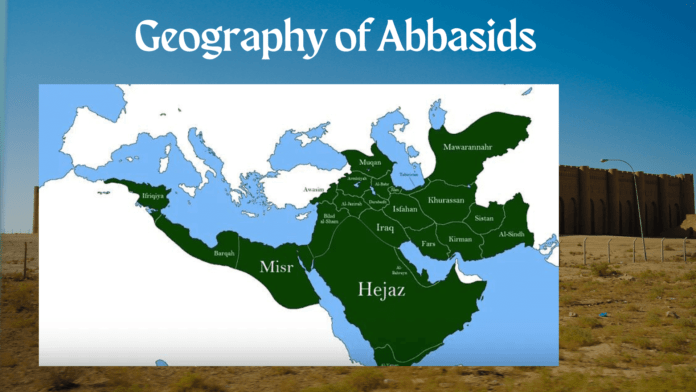The early Islamic empire’s fall and transition were triggered by the same causes that gave rise to its elites and cultural traditions. Even as it was consolidating, the Abbasid Empire started to fall. While the government supported a thriving economy and culture and strengthened its military and administrative institutions, other forces were in motion that would finally cause the Abbasid Empire to fall. The succession issues had escalated by the time of Harun al-rule Rashid’s (786–809). Harun’s eldest son received the caliphate as a legacy, while al-Mamun, his younger son, received the Khurasan administration and the chance to replace his brother. Harun most likely established Khurasan’s independence under al-Mamun to appease the demands of the warlords in eastern Iran. After Harun’s death, Al-Amin tried to replace his brother in favour of his own son. Al-Amin had the support of the Baghdadi people (the abna). The descendants of the original Abbasid armies from Khurasan may have been among these forces, but it is more likely that these were forces assembled for the civil war on the basis of royal patronage rather than on the basis of enduring racial or historical fidelity. Al-Mamun resorted to the autonomous Khurasanian warlords and the Arab armies in Khurasan. In 813, Al-Mamun overthrew his brother in a bloody civil war and became the Caliph. The Khurasans took control of the empire when Mamun conquered Baghdad.
Al-Mamun changed his military strategy as well. He had to rely on the help of a Khurasanian lord named Tahir to gain control of the caliphate. In exchange, Tahir was appointed governor of Khurasan (820–822) and general of the Abbasid forces across the empire, with the understanding that the positions would be passed down to his descendants. In addition to Turks, Bukharis, and Khwarizmis from the Transoxus region, Tahir’s armies also included Khurasanian warlords and their adherents. The Arab presence in the military vanished after this. Even though the system worked for a while, the goal of bringing provincial notables into the central government was lost when a hereditary governorship was allowed.
A significant development in Middle Eastern history and the forerunner of an institution that would characterise many subsequent Muslim administrations was the system of recruiting, educating, and employing slave troops. The Caliphs’ attention was drawn to long-standing precedents for the use of military units from outlying regions and marginal populations by the urgent military and political necessity for loyal soldiers. The Romans had enlisted Germans and Illyrians. The Caliphs and administrators of the Arab-Muslim empire raised more forces in eastern Iran and relied on servile, client, and even slave troops as their personal bodyguards since Umayyad times. The Abbasid military structure was centred on the new system of slave regiments, which was a rationalisation of prior methods. These new battalions bolstered the caliphs’ position, but the Transoxanian and Turkish troops quickly came into conflict with Baghdad locals and the army’s former Arab soldiers. Bloody fights followed. Caliph al-Mutasim constructed a new capital (Samarra) about 70 miles north of Baghdad to separate the army from the populace. From 836 to 870, Samarra was the centre of the caliphate’s military and government, while Baghdad was the cultural and economic centre of the area.
The numerous tiny cliques affiliated with numerous prominent officials had split into two major factions by the end of the ninth century: the Banu Furat and the Banu Jarrah. These groups were founded around a wazir, his kin, and patrons. Based on their shared social and ideological stances, the families also attracted a bigger audience. The majority of the Banu Jarrah faction, though not solely, consisted of Nestorian Christians or Christian converts who frequently received their education at the Dayr Qunna monastery in southern Iraq. This group had become sufficiently influential by the middle of the ninth century to affect state policy. Around 852, Caliph al-Mutawakkil (847–61) was convinced to grant Christians full control over all Christians as well as religious freedom, exemption from military duty, and the authority to build churches. Although Muslim law forbade such transfers, the Caliph acknowledged that converts had the right to inherit their parents’ assets if they were still Christians. However, these concessions were quickly withdrawn.Baghdadi Shi’is made up the majority of the Banu Furat, the other significant faction.
Shiism once more rose to prominence as the main strategy of public opposition to the Abbasid Empire in the first decades of the eleventh century. Ismailism was preached in southern Iraq, Bahrain, Syria, Mesopotamia, Yemen, Daylam, eastern Iran, and North Africa. Although the Ismailis appear to have had a central administration, their missions frequently modified their message to fit the previous religious beliefs and understandings of the people they were trying to convert. The movement spoke to people of all socioeconomic groups, including peasants in Iraq and Syria, Bedouins in Arabia, villagers in Iran, Berbers in North Africa, and eastern Iran’s upper classes.
The Abbasid Empire’s breakup into a number of separate provinces and governments implied significant alterations in the way society was organized. In addition to ensuring the fall of the empire, the formation of a slave military elite and a new form of property-based government also ensured the transfer of power from the old to the new elites. The foundation of the early Abbasid government was a coalition of central government employees and prominent families and landowners in the provinces. The empire recruited the scions of provincial houses to work for the central government. Their connections and goodwill helped unite the kingdom and make the central administration effective in the provinces. However, instead of being chosen from provincial families, the staff of the central government tended to be made up of an increasing number of former scribes’ descendants over time.
The prominent provincial landowners who had first backed the Abbasid Empire were ultimately destroyed due to the central government’s downfall. A new elite was introduced to the countryside to compete with the old provincial notables, supported by the waning but still sizable powers of the central government. This was a result of the rise of military warlords, a new financial and administrative elite based in the capital city, and the development of new forms of land tenure (including iqta assignments and tax farms). Many of the village notables who owned small amounts of land were replaced by a new class of large land controllers and landowners brought in by the central government.
A civil war for accession broke out in response to Harun al-Rashid’s death and lasted from 809 to 833. Baghdad was under siege for a year during the war, and the average people, not the city’s elite, fought for it. A body of poetry that has persisted to the present day honours their achievements. Finally successful in his assault, the new Caliph Mutasim (reigned 833–842) relocated the capital to Samarra, to the north of Baghdad. The Abbasid army began to rely more and more on Turkish soldiers during the ninth century, some of whom were slaves and others free men. Gradually, a caste of military personnel emerged that was distinct from the general populace. Instead of establishing an autonomous dynasty in Khurasan, the Tahirids steered the region toward a separate Iranian administration. The Tulunids, the ruling dynasty in Egypt, provincial governors, and tribal chiefs all used the rising chaos and occasionally anarchy inside the Samarra-based central administration to further their own influence as several Abbasid family members contended over the caliphate. An essential danger to Abbasid rule in 869 was the Zanj uprising in the southern Iraqi city of Basra. The Zanj were African slaves who had been used on southern Iraqi plantations as laborers, marking the sole known instance of extensive exploitation of slave labour for agricultural purposes in the Islamic world. Other non-slave labourers joined the uprising that Ali ibn Muhammad was leading. After Ali ibn Muhammad was slain in battle in 883, the Abbasid military commander Abu Ahmad al-Muwaffaq, whose brother was the Caliph, was able to put an end to the uprising. The capital was moved back to Baghdad under Caliph al-Muqtadir (r. 908–932), where it stayed until the end of the Abbasid dynasty. By the tenth century, any candidate for the caliphate required the aid of the military to succeed. The Caliphs were reduced to mere symbols when the army assumed control of the state. Numerous ineffective leaders caused massive uprisings, dwindling tax collections, and expensive maintenance expenses for the Turkish army. The dynasty was practically bankrupt when it ultimately fell. Ahmad ibn Buya, a Shi’ite Persian, conquered Baghdad in 945 and founded the Buyid dynasty, a confederation of governmental entities governed by numerous family members. A caliph-style remnant of the Abbasid family relocated to Cairo, where it was welcomed as an exile with no control over either political or religious life.
The downfall of the Abbasid Empire was a political, social, and economic revolution all at once. A single, cohesive empire eventually replaced small states as a result of this. Large-scale landowners and military lords resisted centralised authority and took the place of the bureaucratic and small-land elites. The empire became more vulnerable as a result of the general economic downturn. Lastly, the empire’s own military, administrative, and cultural policies led to its fall and the rise of a different kind of state and civilization.





Howdy! Do you know if they make any plugins to safeguard against hackers?
I’m kinda paranoid about losing everything I’ve worked hard on. Any suggestions?
Look into my page – vpn special coupon
Hi there, I desire to subscribe for this blog to get most up-to-date updates, so where can i do
it please help out.
Take a look at my homepage – vpn code 2024
You could definitely see your skills within the work
you write. The sector hopes for more passionate writers such as you who aren’t afraid to mention how they believe.
At all times follow your heart.
Feel free to visit my website; vpn special coupon
Link exchange is nothing else but it is simply placing the other person’s webpage link on your page at appropriate place and other person will also do similar in favor of you.
Take a look at my site :: vpn special coupon
Pretty section of content. I just stumbled upon your website and in accession capital to
assert that I acquire in fact enjoyed account your blog posts.
Anyway I will be subscribing to your augment and even I achievement you access consistently quickly.
My web-site; vpn coupon code 2024
After I initially commented I appear to have clicked on the -Notify me when new comments are added- checkbox
and now each time a comment is added I get 4 emails with
the same comment. There has facebook vs eharmony to find love online be an easy
method you can remove me from that service?
Thank you!
Yes! Finally someone writes about eharmony special coupon code 2024.
I’ve been exploring for a little for any high quality articles or weblog posts on this kind of area .
Exploring in Yahoo I at last stumbled upon this site.
Reading this info So i’m satisfied to show that I have an incredibly
just right uncanny feeling I came upon just what I needed.
I so much indubitably will make sure to do not put
out of your mind this website and provides it a
look regularly.
Here is my website: nordvpn special coupon code 2024